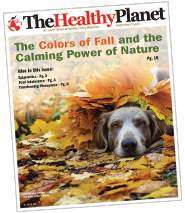By Teresa Garden, DVM
Most of us find it comforting to be greeted by our faithful dogs after a long day’s work. No matter how tired, grumpy, sweaty, or dirty we may be, our pooches can’t wait to greet us with a wagging tail and a big sloppy wet kiss. Or perhaps they will grab their favorite toy and will dance and run around to show their elation upon your return. These behaviors would be considered the norm. However, there are other pets who may exhibit abnormal behaviors in our absence and upon our return. These dogs may suffer with separation anxiety.
Separation anxiety can be defined as the occurrence of distress when your pet is separated from the person or persons to whom it is most attached. Approximately 14-17% of pets are afflicted with phobia when the owner is away from home or access to the owner is blocked. The underlying issue is hyper-attachment to one or more family members. There may be various causes of the disorder. It may be related to selected breeding that has created dogs that are extremely socially oriented toward humans and socially dependent on them. It can occur in older animals due to aging and cognitive decline. It can be attributed to an upsetting event that has occurred when the pet was home alone (noises, storms) or a change in the home environment ( owner returning to work force after being home for extended period). It may be a learned behavior where the dog realizes certain situations signal long-term absence of the owner (work attire, grabbing brief case, car keys).
A key point of this disorder is that symptoms may start just prior to an owner’s departure and will continue to occur only in an owner’s absence. Predeparture symptoms are restlessness, pacing, panting, whining, depression, and clinging to the owner. Chewing and scratching at windows and doorways, self-mutilation, house soiling, vocalizing, vomiting, diarrhea, depression, anorexia, and lethargy will occur when the owner is away. Often, personal items of the owner will be destroyed. The scent of these items serves to remind the pet the owner is gone and that in turn increases the anxiety level in the pet. The anxiety leads the pet to destroy the item-not spite or retaliation.. When the owner returns home the dog will have exaggerated greeting behaviors. Separation anxiety is a distressing behavioral problem with serious consequences for the owner as well as the pet. Treatment modalities are varied and are often combined depending on the severity of symptoms of the disorder.
The goal of treatment is to promote calmness in the pet when the owner is absent. Treatment modalities consist of managing and enhancing the home environment, behavior modification of owner and pet, and medications. To enrich the home environment provide distractions for the dog such as chew toys with treats hidden inside, leave on the TV or radio (classical music often best for calming) and plug in DAP diffusers. DAP is “dog appeasing pheromones” which will diminish fears, stress, and anxiety. Bach Flowers such as Rescue Remedy, Mimulus, or Rock Rose will lessen fear and terror. They can be mixed with water or used in a spray bottle. We will often employ western and eastern herbs that have a calming effect. Anxiety & Stress Formula by Resources is very helpful for these patients. Some dogs will respond to Lavender essential oil applied to their ears. If the dog is not destructive, leaving a piece of clothing worn by the owner can be comforting to the pet. Extra exercise at Doggie Daycare or by a pet sitter can be helpful in lowering anxiety. Regardless, try to make sure the dog has been thoroughly exercised by play or walks prior to departure of the owner. Patients with more severe symptoms such as destructive behaviors may require western medications such as Clomicalm or Reconcile. These drugs are both approved to treat separation anxiety in dogs. They help to stabilize mood by increasing brain levels of serotonin.
All dogs will need behavior modification training in order to overcome their fear of being apart from their owner.
This entails time, patience, and work on the part of the pet owner. Minimizing departure clues by altering your routine prior to leaving is paramount. Play with car keys, pick up your briefcase or purse and carry it around the house at times other than when leaving, and place these items at different locations in the house. Dogs will re-learn that these items are no longer always associated with departure. Keep departure and return times quiet and low key. Provide the dog with a pleasurable task before departure to help change his emotional state from anxious to relaxed. This may be in the form of exercise as well as chew toys. Make sure exercise and chew toys are provided at times other than departure or they will become a signal for your leaving. Give the dog attention only for being calm and quiet upon your return. This may entail ignoring your pet for 5-10 minutes until he is quiet (except for allowing the pet outside to eliminate).
The best response to treatment we can hope for is to improve the situation to a livable degree. These pets can remain emotionally fragile and are susceptible to back sliding. The goal of treatment is to allow the pet to be left alone, not experience so much anxiety and to not exhibit unwanted behaviors. Most pets will not be completely cured but they can be helped with a multi-modal approach and lots of love and patience.
Dr. Teresa Garden is chief veterinarian/owner of Animal Health & Healing, a full-service holistic and conventional veterinary practice in the Maplewood/Richmond Heights area. AnimalHealthandHealing.com; phone: 314-781-1738.
Tags: pets, separation anxiety


